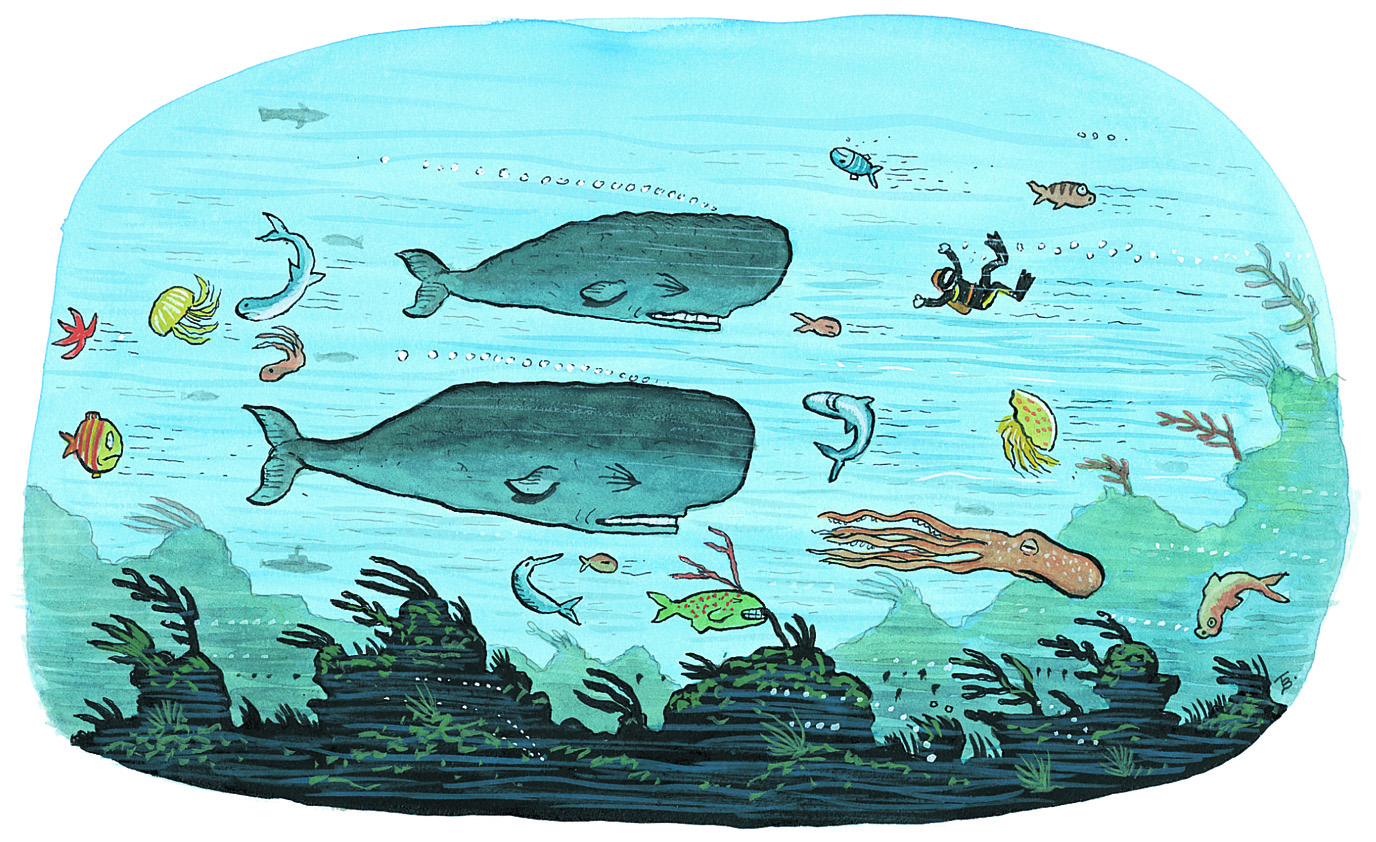
Overview
In this section you will find materials that support the implementation of EarthComm, Section 7: Deep Circulation of the Ocean.
Learning Outcomes
- Use a model to explain the effects of temperature on ocean circulation.
- Use a model to explain how salinity affects mixing in the oceans.
- Use a model to describe how convection cells are related to deep ocean circulation.
- Analyze data on world maps to identify patterns in sea surface temperature and ocean salinity.
Inquiring Further
- To investigate density differences, each student will need:
- Water
- Salt
- 3 eggs
- To learn more about how volcanic eruptions at divergent boundaries affect deep ocean currents, visit the following web sites:
Submarine Volcanoes, Volcano World
Reviews the basics of plate tectonics and examines closely submarine volcanoes at divergent and convergent boundaries and hot spots. The site has good images of underwater lava flows as well as images of the organisms that live near these submarine volcanoes.
Deep Ocean Volcanoes, NOAA
Scientists believe that 80 percent of the volcanic eruptions on Earth take place in the ocean. Watch video of the deepest ocean eruption on record.
Submarine Volcanoes, Ridges, and Vents, USGS
General overview of submarine volcanic eruptions as well as information about specific underwater volcanoes including the volcanoes of the Juan de Fuca ridge in the Pacific, Kavachi of the Solomon Islands, Kick 'Em Jenny of the West Indies, the Loihi Seamount of Hawaii, and Surtsey and the Vestmannmaeyjar volcanics of Iceland.
Activity Reports an example from West Mata, SI Global Volcanism Program
West Mata is a submarine volcano 200 km SW of Samoa in the New Zealand to Fiji volcanic region. This report shows images of eruptions of two vents recorded by Jason 2, the remotely operated vehicle used to explore the sea floor.
Remotely Operated Vehicle Jason/Medea, WHOI
Describes two ROVs used to study the sea floor. Follow links to find out about the diverse fleet of underwater vehicles, including Alvin, Jason, and Sentry.
To learn more about how atmospheric circulation affects deep ocean circulation, visit the following web site:
Ocean Circulation, Water Encyclopedia
Examines surface currents, deep ocean currents, and their connection to atmospheric circulation.
Surface and Deep Ocean Circulation, Columbia Univ.
High level Powerpoint explains circulation and its relationship with the distribution of heat on Earth.
To learn more about how the rotation of the Earth affects deep ocean circulation, visit the following web site:
"Current" Events – Forces and Pressure on Currents, Texas A&M University
Considers the effects of Earth’s rotation on ocean circulation.
Science on a Sphere - Ocean Currents, NOAA
An overlay of ocean currents, taken from the ocean circulation dataset.
To learn more about how the biosphere is affected by deep ocean circulation, visit the following web sites:
Exploring the deep ocean floor: Hot springs and strange creatures, USGS
Takes a look at some of the organisms which live on the ocean floor. Includes color photos.
Dive and Discover: Expeditions to the Seafloor, Woods Hole Oceanographic Institution
Examines the work of scientists—geologists, chemists and biologists—who are exploring the seafloor and making new deep-sea discoveries. Expedition 2 in particular has some information about life at sea vents.
Resources
To learn more about this topic, visit the following web sites:
Seawater Temperature, Salinity, and Density
Salinity, NASA
Overview of sea surface salinity and its importance to the water cycle and ocean circulation.
Sea Surface Temperature, NASA
Overview of sea surface temperature and its importance to climate.
Density of Ocean Water, Windows to the Universe
Examines how the density of ocean water changes with depth.
Temperature of Ocean Water, Windows to the Universe
Examines how the temperature of ocean water changes with depth.
Deep Ocean Circulation
Thermohaline Circulation, NOAA
Describes in a simple way the effects of temperature on density and the initiation of downward movement in the oceans.
Deep Ocean Currents, NOAA
Learn how bottom currents scour and sort sediments, thus affecting what kind of bottom develops in an area.
The Global Ocean Conveyor Belt, NOAA
Describes the general circulation pattern of the Earth’s oceans.
Thermohaline Circulation: The Global Ocean Conveyor, Windows to the Universe
Examines the large-scale pattern in which seawater moves around the global ocean.
Science on a Sphere - Ocean Currents, NOAA
An overlay of ocean currents, taken from the ocean circulation dataset. Dowload the latest viewer to overlay datasets.
